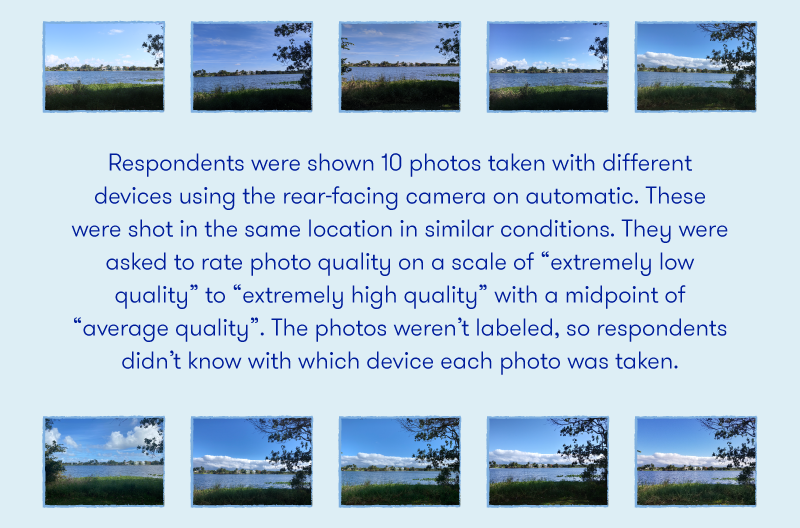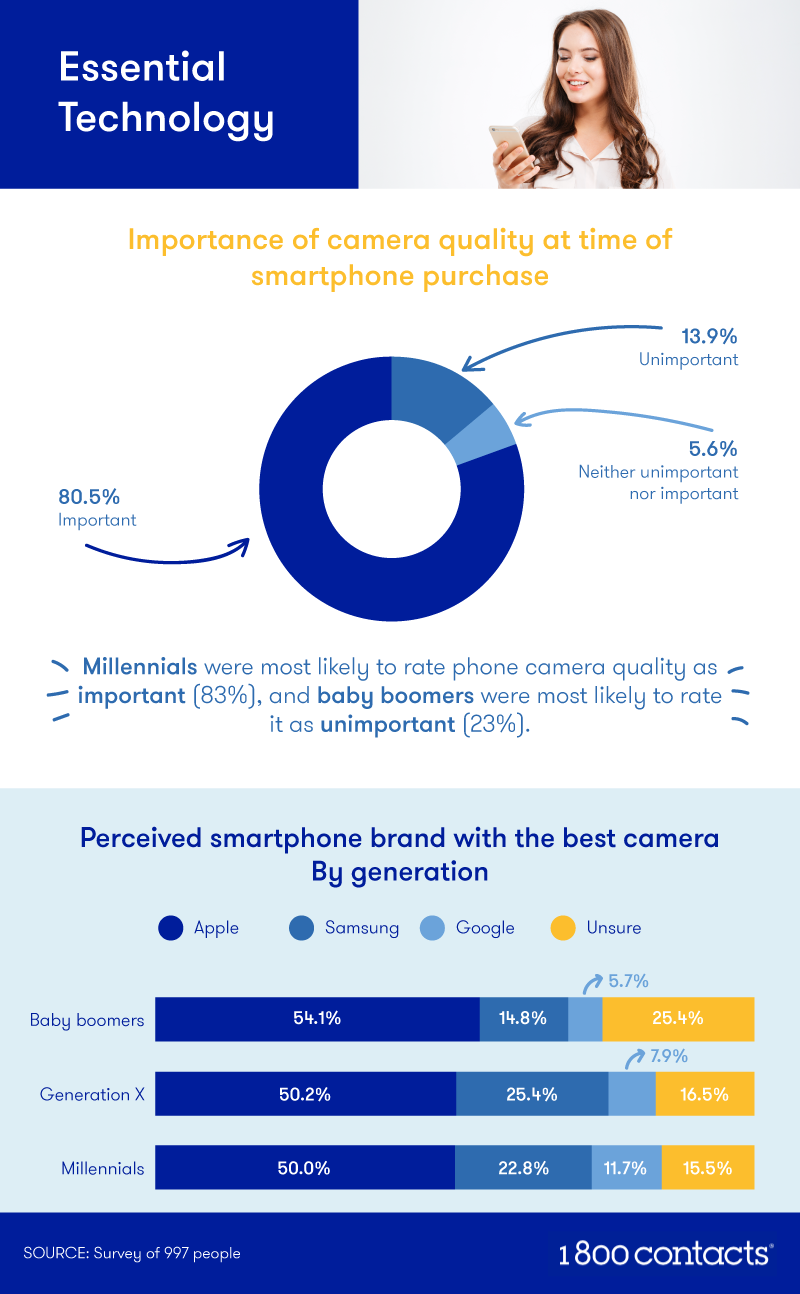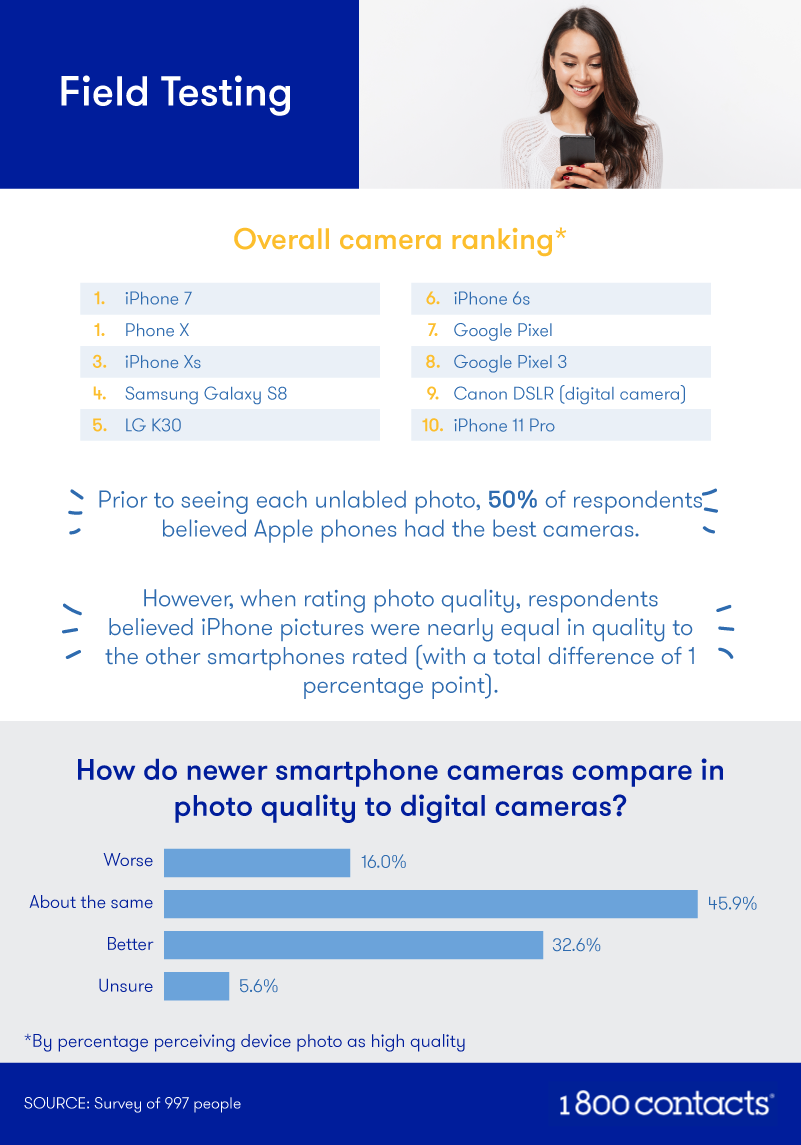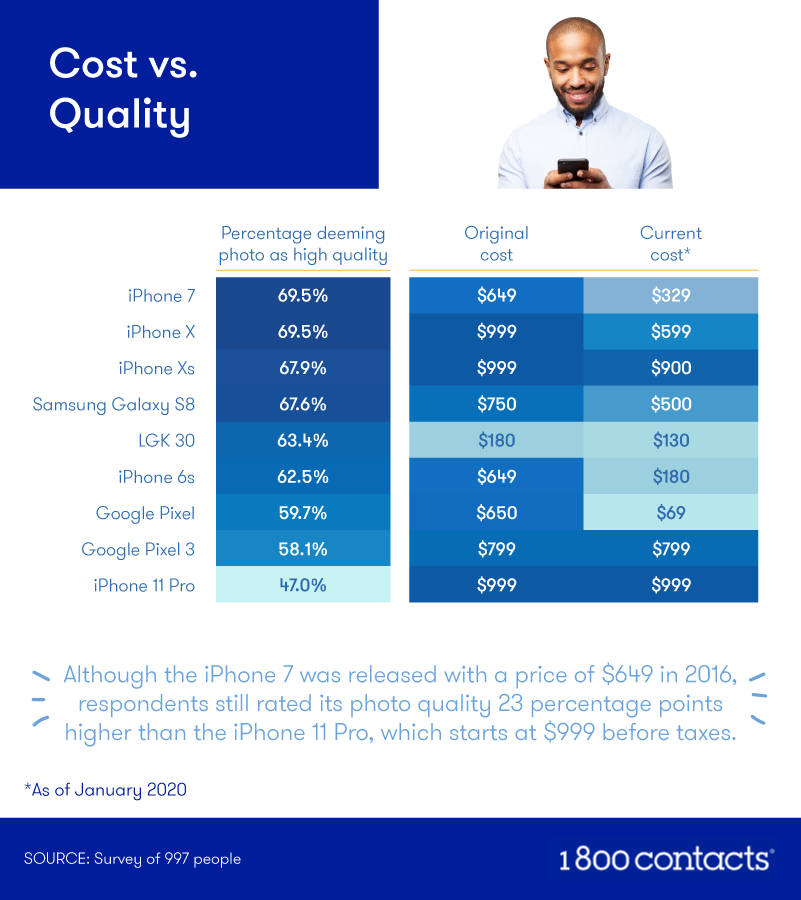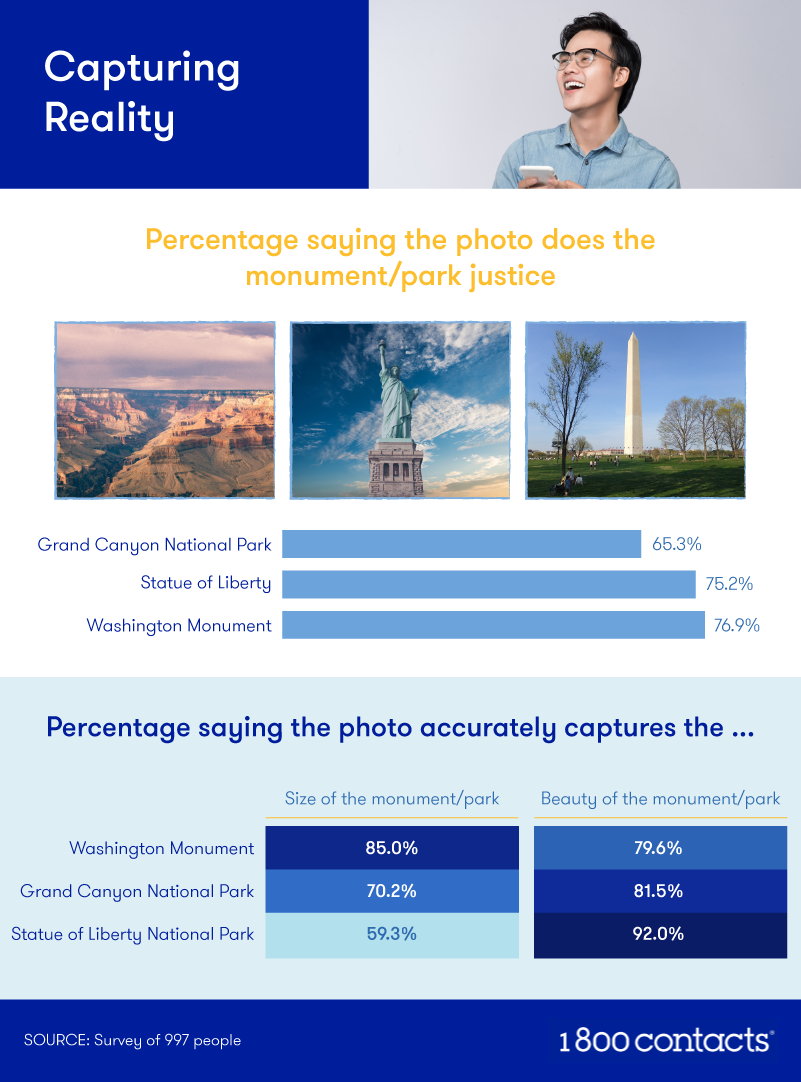A picture's worth
Most people shopping around for a new smartphone want to know which has the best camera. A quick internet search yields billions of results, many of which are personal or advertised opinions as opposed to being backed by real data. As experts in improving vision, we felt compelled to dive in and surveyed 997 people about their thoughts on smartphone camera capabilities.
First, we showed participants images taken in the same location and similar conditions but with different smartphones. Respondents had to rate the quality of each image without knowing with which device they had been taken. We also cross referenced much of this information with eye traits specific to the respondent to see if their own eye color could be impacting their visual smartphone preferences. Continue scrolling to see which smartphone dominated the competition. (Hint: It isn’t the one you’d expect.)
Phone vs. phone
Before we showed participants the images we had taken with multiple smartphones, we wanted to know their established preferences. Roughly 81 percent said having a good camera was important when choosing a smartphone. Millennials were the most likely to feel this way, while 23 percent of baby boomers claimed a good camera was unimportant. Considering that only 7 percent of millennials in the U.S. don’t own a smartphone (compared to 32 percent of baby boomers), it makes sense that better cameras would be more important to this younger generation.
Specific brand preference, however, operated outside of generation. At least half of all three generations surveyed agreed that Apple made the best camera, followed by Samsung and Google. That said, Samsung did garner more consideration for its camera among Gen Xers and millennials – but this was before we put them to the picture test.
Newer doesn’t always equal better
In the ultimate test, the latest models did not always come out on top. When respondents saw images of the same landscape taken on different phones, the iPhone 7 and iPhone X tied for first place. Considering the iPhone 7 was released in 2016, it’s quite impressive that it still can compete with newer and more expensive smartphones when it comes to photo quality.
Although Apple phones were among the top three, other smartphone brands were deemed nearly identical in quality, with only a 1 percent difference. Before taking the picture test, however, half of participants assumed that Apple would win on all camera fronts.
Next, we asked respondents to consider all smartphone cameras compared to digital cameras. A digital camera’s sole function – taking pictures –theoretically would make it a tough competitor of the smartphone. That theory did not hold true, however, as only 16 percent felt digital cameras take better pictures than smartphones.
Passing the picture test
Although nearly 81 percent of respondents agreed the quality of a smartphone’s camera was important, price plays a huge part in purchasing decisions, as well. Around 2.2 billion people worldwide have been willing to spend over $600 for an iPhone, but the ones who accept the roughly four-figure price tag of the iPhone 11 Pro probably expect a quality camera to match. If this is the case, this group will be heavily disappointed, as only 47 percent of respondents rated the iPhone 11 Pro’s image as high quality. Putting this number into perspective, 69.5 percent of respondents rated the photo taken by the iPhone 7 as high quality, even though it currently retails for $670 less than the iPhone 11 Pro.
Before we jumped to the conclusion that the iPhone 7 has a better camera than the iPhone 11 Pro, we considered other factors that could have been at play. As it turns out, eye color and contacts impacted opinions. People who wore contacts were 10 percent more likely to say Apple phones had the best cameras, while people with hazel eyes were more likely to side with the Google Pixel. Lastly, brown-eyed respondents were more likely than those with other eye colors to rate iPhone 7 pictures positively.
Picture perfect
Beauty, awe, and wonder can be difficult to capture even with the best of cameras, which might be why people often claim their cameras don’t “do justice” to a particular view or experience. We had respondents rate photographs of some of the most awe-inspiring sights in the U.S.: the Washington Monument, the Statue of Liberty, and the Grand Canyon.
The Grand Canyon was the least likely to be holistically captured in a smartphone photo, according to respondents. This national park extends over 1,904 square miles, so even a history-changing invention like the iPhone may be out of its depth. The Washington Monument and Statue of Liberty, however impressive, had more than three-quarters of respondents agreeing that smartphone pictures did the landmarks justice. Perhaps human-made sights can more accurately be represented by human-made technology.
That said, 85 percent of respondents agreed it was the sheer size of the Washington Monument that was well-captured, while 92 percent felt the Statue of Liberty’s beauty stood out more in pictures.
Beauty in the eye of the smartphone
Ultimately, our data revealed that you don’t necessarily have to spend four figures to capture an image successfully. Newer and more expensive phones often lost in the photography competition we presented to nearly 1,000 people.
However good your camera might be, though, we insist you first take in the sights and surroundings with your own eyes. Unless your vision is completely perfect, however, your ability to feel awe and inspiration can be compromised. 1800contacts.com can help. With 24/7 customer service, a best-price guarantee, and the ability to immediately renew your prescriptions, 1800contacts.com wants to get you on your way to seeing – and appreciating – your surroundings before you whip out that camera.
Methodology and limitations
To gain the results shown in the above study, photos were taken across multiple sunny days at the same location using 10 different devices. The devices used were as follows: iPhone 6s, iPhone 7, iPhone X, iPhone Xs, iPhone 11 Pro, Google Pixel, Google Pixel 3, LG K30, Samsung Galaxy S8, and a Canon DSLR.
An image from each of these devices was then put into a survey where respondents were asked to rate each unlabeled image for their level of quality. A total of 997 people was surveyed for this portion of the study. 129 of the participants were baby boomers (with a margin of error of 9%); 289 were from Generation X (with a margin of error of 6%); 539 were millennials (with a margin of error of 4%); and 40 were from various other generations.
To gather the data regarding monuments/parks, we asked respondents who’d been to one of the included sites in the past year various questions about how the monument/park looked in real life compared to the photo we showed them. The devices used for the photos were not new and, therefore, may have had some wear and tear, but all were deemed to be in working order without any damages preventing the use of the camera or significantly affecting the photo quality.
To qualify for the survey where the device photos were rated, respondents had to have a cellphone currently. To qualify for the survey on monuments/parks, respondents had to have been to at least one of the following in the past year: the Grand Canyon, the Statue of Liberty, or the Washington Monument.
Current smartphone prices were gathered for base model phones of the same type on the websites of authoritative sellers.
Fair use statement
If you’re thinking of buying a new phone or know someone who is, you’re welcome to help them out with the data in this article. If you share it online, be sure it’s for noncommercial purposes and that you link back to this page.
